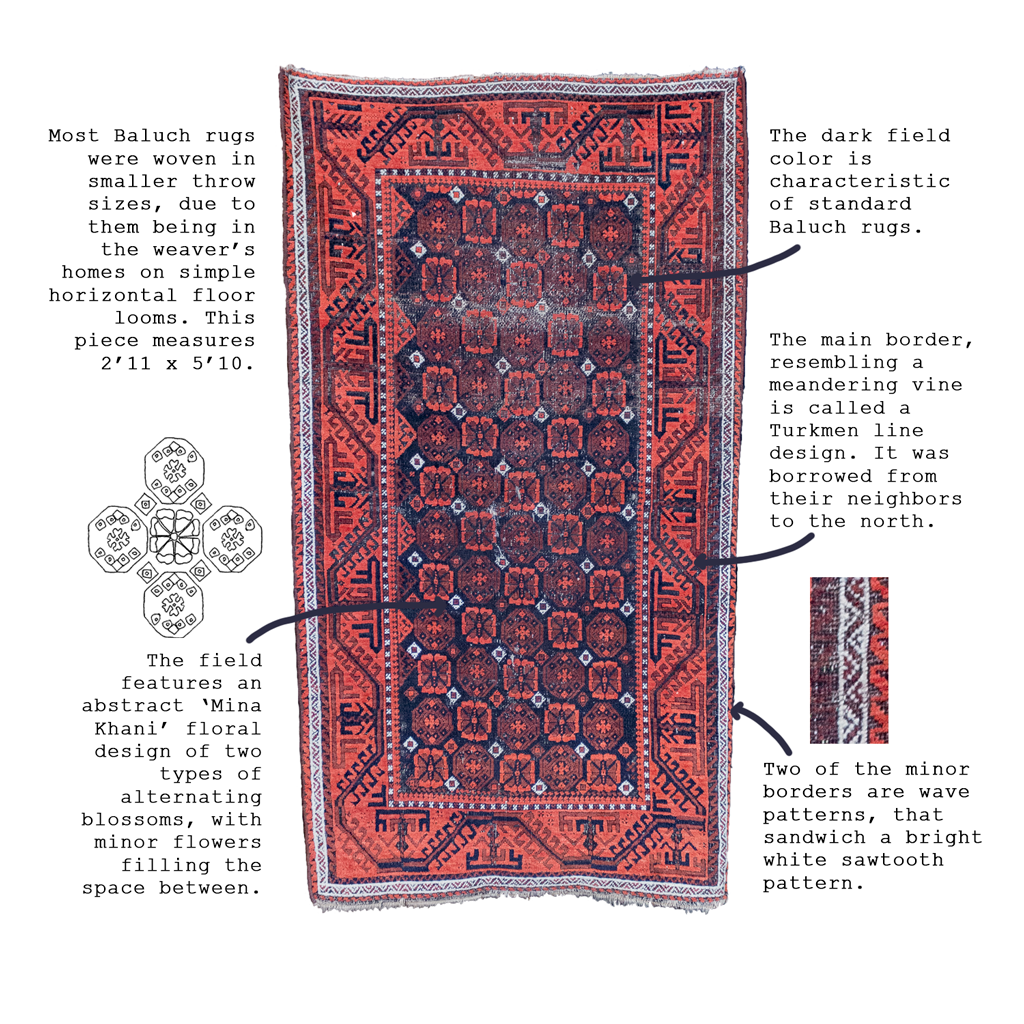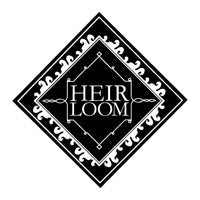

The Baluch
Baluch refers to a people that span from eastern Persia, into western Afghanistan and reaching throughout Pakistan and into the Punjab state of India. They are composed of many distinct groups that share common language, culture and customs. Traditionally they were mostly nomadic but currently many have adapted to settled life.
The highest quality weaving, with the most sustained production, comes from the area where northeast Persia and western Afghanistan meet. In the past, many of the rugs wound up for sale in the Mashad market, which is the largest city in the region.

Baluch rugs most commonly use a limited color palette of blue, red, brown and black, with ivory as an accent color. Camel grounds are sometimes used, more often for prayer rugs, dowry rugs or pillowcases. The most common ground color used for Persian Baluch weavings is dark blue, while the Afghan Baluch more often use brown. Due to the nomadic/semi-nomadic lifestyle and rurality of their land, synthetic dyes arrived late to Baluch communities compared to other areas in the region leaving them a palette derived from local dyestuffs.

Mina Khani Design History
The Mina Khani pattern is one of the most prevalent Persian repeating designs after the Herati pattern. In addition to being found in Baluch rugs, the pattern is prevalent everywhere from the urban centers of Tabriz and Veramin to Kurdish village rugs and Turkmen trappings. Stylized versions are sometimes even found in the weavings of the Caucasus.
It consists of a few alternating types of blossoms, which are connected by a system of either vine or lattice work, with minor flowers and more vines filling in the empty space.
The origins of this design are generally accepted as Persian and may point to a group of urban (court) rugs known as “vase” carpets, perhaps woven in the city of Kerman. These rugs were composed of a complex lattice design with directional designs, large and small blossoms, all connected by incredibly intricate vine-work.

We sourced much of our information from Baluchi Woven Treasures by Jeff W. Boucher. Further information came from Hali Magazine and our shop treasure Oriental Rugs by Murray L. Eiland Jr. & Murray Eiland III.

